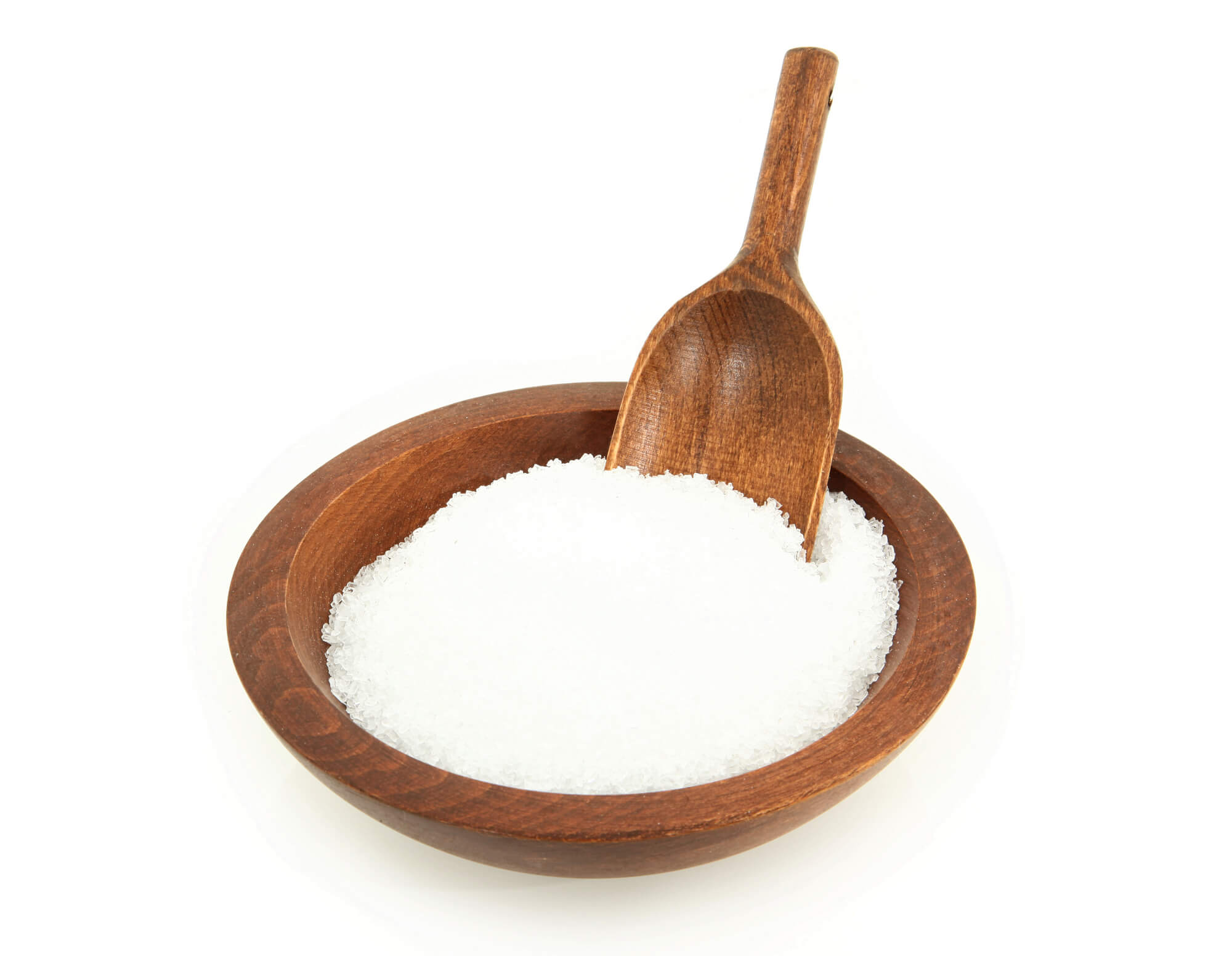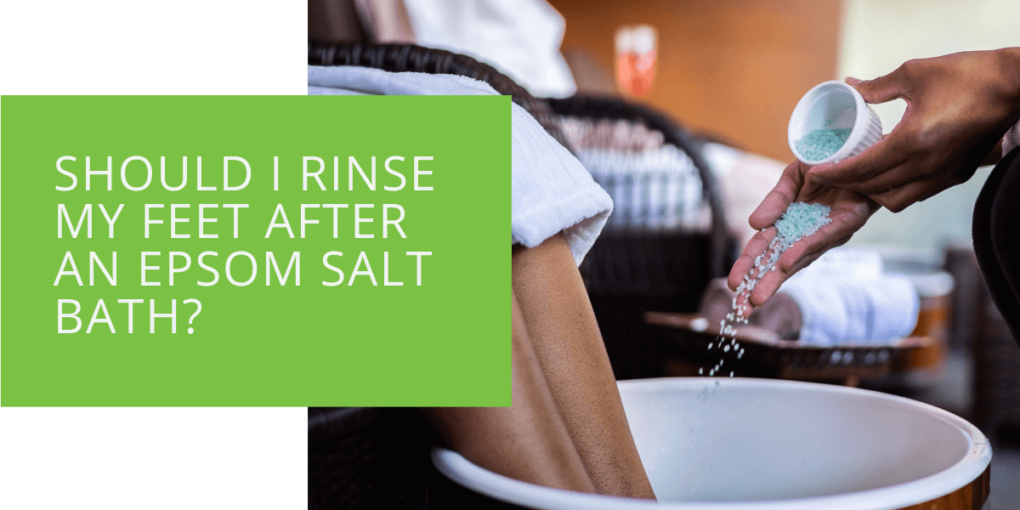Should I Rinse My Feet After an Epsom Salt Bath?
Epsom salt baths have gained popularity for their potential foot health benefits. Many wonder whether rinsing their feet after an Epsom salt bath is necessary. This article will delve into the topic, examining the benefits, discussing the science behind Epsom salt, and providing best practices to help you make an informed decision.
Understanding Epsom Salt Baths and Their Foot Health Benefits
Epsom salt, scientifically known as magnesium sulfate, has long been used in foot baths for its potential therapeutic effects. When dissolved in warm water, Epsom salt releases magnesium ions, which can penetrate the skin and potentially benefit foot health. These include relaxation, pain relief, and detoxification.
The Science Behind Epsom Salt's Effects on Feet
The magnesium ions in Epsom salt can promote muscle relaxation, making it an excellent choice for individuals with sore muscles or cramps. Additionally, Epsom salt may help reduce inflammation and relieve pain. It's important to note that while Epsom salt can offer these potential benefits, it may not be a cure-all solution for every foot condition.
Should You Rinse Your Feet After an Epsom Salt Bath?
The decision to rinse your feet after an Epsom salt bath is subjective and can depend on individual preferences and circumstances. Let's explore the pros and cons to help you make an informed choice.
Pros of Rinsing Feet
Rinsing your feet after an Epsom salt bath offers several potential benefits to foot health and overall well-being. Let's explore these advantages in more detail:
- Removal of Excess Salt Residue: Epsom salt contains high concentrations of magnesium sulfate, and rinsing your feet can help eliminate any excess salt residue on the skin. This is particularly beneficial for individuals with sensitive skin or those who may experience dryness or irritation when salt residue is left behind.
- Prevention of Dryness: While Epsom salt baths can provide hydration to the skin, some individuals may find that the high mineral content leaves a slightly dry feeling. Rinsing your feet with fresh water after the bath helps restore the natural moisture balance and prevent any potential dryness that may occur due to the salt's drying effect.
- Removal of Impurities and Bacteria: Bathwater, especially when warm, provides a suitable environment for the growth of bacteria. Rinsing your feet after an Epsom salt bath helps wash away any impurities or bacteria that may have accumulated during the soak. This can reduce the risk of infections, particularly for individuals with open wounds, cuts, or underlying foot conditions.
Cons of Rinsing Feet
While rinsing your feet after an Epsom salt bath offers certain advantages, there are also considerations. Let's explore the potential drawbacks of rinsing:
- Loss of Residual Effects: Epsom salt baths aims to promote the absorption of magnesium ions through the skin, which can provide potential benefits such as muscle relaxation and pain relief. Rinsing your feet immediately after the bath may remove the residual effects of the salt, diminishing the potential benefits gained from the soak.
- Potential Dryness: While rinsing can prevent dryness caused by excess salt residue, it's important to note that rinsing can remove the layer of moisture left on the skin after the bath. This can lead to potential dryness for individuals with naturally dry or sensitive skin. If you rinse, consider moisturizing your feet afterward to maintain proper hydration.
Balancing these pros and cons will depend on your foot health needs, skin sensitivity, and personal preferences. It's essential to listen to your body, observe how your feet respond to the bath, and adjust your routine accordingly. If you have any concerns or underlying foot conditions, consulting with a podiatrist or healthcare professional is advised to receive personalized guidance.

Best Practices for Epsom Salt Baths and Foot Care
To make the most of your Epsom salt foot bath, it's important to follow the best practices:
- Prepare the bath: Fill a tub with warm water and add Epsom salt according to the recommended instructions.
- Soak your feet: Place your feet in the tub and soak them for the recommended duration, usually 15-20 minutes.
- Gently pat dry: After the bath, dry your feet with a soft towel, careful not to rub too harshly.
- Moisturize as needed: Apply a foot cream or moisturizer to keep your feet hydrated, especially if you have dry skin.
- Personalize your bath: Consider adding essential oils or other natural ingredients for additional benefits, but be cautious if you have any allergies or sensitivities.
Tailoring Epsom Salt Baths to Individual Needs
You are considering individual circumstances when deciding whether to rinse your feet after an Epsom salt bath is important. Factors like skin sensitivity, foot conditions like fungal infections or open wounds, and personal preferences should be considered. Consulting with a podiatrist can provide personalized recommendations based on your foot health needs.
Conclusion
The decision to rinse your feet after an Epsom salt bath is personal. While rinsing can help prevent dryness and remove salt residue, it may also diminish the potential benefits of the soak. Ultimately, listening to your body, considering your unique circumstances, and making an informed decision that aligns with your foot care goals is important.
It's worth noting that Epsom salt baths are not a substitute for professional medical advice or treatment. If you have any underlying foot conditions, infections, or concerns, it's crucial to consult with a podiatrist or healthcare professional before starting any foot care regimen.
Remember, the primary goal of an Epsom salt bath is to promote foot health and provide potential relief for various foot-related issues. Whether you rinse your feet after the bath, be consistent with proper foot hygiene and care to maintain optimal foot health.
Key Takeaways
- The decision to rinse your feet after an Epsom salt bath is subjective and depends on individual preferences and circumstances.
- Pros of rinsing feet include removing excess salt residue, preventing dryness, and removing impurities and bacteria. Cons include the potential loss of residual effects and potential dryness.
- Best practices for Epsom salt baths and foot care include preparing the bath correctly, soaking feet for the recommended duration, gently pat drying, moisturizing as needed, and tailoring the bath to individual needs.

